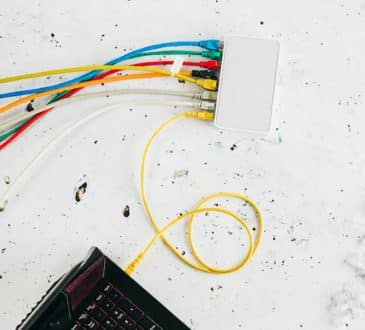How to Develop A Resilient Mindset

Many leaders are feeling unbelievably stretched and stressed beyond their limits, like tired rubber bands that no longer snap back. So how do you increase your elasticity so you can naturally return to a balanced state? Resiliency is the elastic force we use to return to normal when stress and crisis stretch us out. Unlike rubber bands, though, that have finite resilience that can be exceeded and destroyed, as humans, we have the ability to build resiliency. And we build our resiliency in times of crisis and stress through seeing these moments as opportunities to develop this critical leadership skill. By developing a resilient mindset, leaders can become more effective, calmer under pressure, and rebound faster from destabilizing challenges.
Before we can understand resiliency, we need to be aware of what prevents it. Dr. Martin Seligman, a leading researcher in psychology, describes characteristic mindsets that prevent resilience in his 3P’s model.
The 3P’s: Identifying Destructive Mindsets
- Permanence – “This will never end.”
Permanence is the mindset that some stressful situation, insurmountable challenge, or negative experience will last forever. This mindset prevents us from seeing how things are continually shifting, and blocks our ability to seek solutions to problems. It is important to know that no matter how large or difficult a crisis may be, it’s state is not solid but fluid, and in that fluidity there will be opportunities to help direct the flow towards positive outcomes. - Personalization – “This is all my fault.”
Personalization is the mindset of taking on all of the blame for an issue. Not only does this create an unbearable burden of stress, it also limits our ability to find progressive solutions to issues. While acknowledging our own faults is important, we must also be able to properly assign responsibility for problems to the appropriate parties involved so that we can focus on what must be changed to find solutions and prevent future failures. - Pervasiveness – “Everything is wrong.”
Also called “catastrophizing”, pervasiveness is the mindset that one problem means everything else is wrong. This extremely destructive mindset might look like scrapping an entire project because of a singular issue, firing an employee for a correctable offense, or it could become anxiety about one mistake that bleeds into every other aspect of your life. It is important to maintain perspective and isolate the issue so that you can understand what can and can not be changed, and quarantine the stress from exceeding the proper scope and scale.
The 4M’s: The Keys of a Resilient Mindset
Once we develop awareness around the 3P’s, we are ready to shift limiting beliefs and destructive mindsets into a resilient mindset. I have spent many years leading teams through critical situations and projects in both the military and civilian sectors. Through these experiences I have developed the 4M model to help me develop greater resiliency, keep an even keel, and rebound faster in stress and crisis so that I can maintain effective leadership in a healthy, balanced state.
- Mindfully Communicate
A key component to resiliency is having authentic human connections and strong support systems. During the height of the COVID crisis, our business communications and relationships became increasingly more digital and much less personal. A resilient leader is challenged to foster supportive teams by cultivating space for communicating personably and authentically. It is important to remember that we are all real humans with lives outside of our jobs. And as leaders, we need to be the example when it comes to setting the tone for mindful communication. Avoid losing that personal touch by checking in with your team regularly and building relationships with them consistently. And remember that as a leader, you also need support, so be sure to make time for positive connections with your family, friends, and communities so that you can keep nurturing your underlying support systems, too. - Magnify Positivity
When you are in a survival mindset, it’s easy to focus only on what’s going wrong and become increasingly anxious or overwhelmed as you put out one fire after another. As leaders, we must develop discipline to focus on the positive and find the silver linings in difficult situations. Even when there are challenges, or set-backs, a resilient leader seeks to find the upside, and discover potential hidden opportunities for beneficial shifts.Through the COVID crisis, businesses and leaders have faced unprecedented challenges and have had to radically shift day to day operations. Many of us had to spend long periods in isolation. Rather than seeing this as a negative, I found that the lockdown actually allowed my family to grow closer together through regular video calls, and provided me more time to lay the foundation for exciting changes, such as presenting more events based on leadership and mentorship. I stayed focused on the opportunities that were created through these monumental challenges and came out more resilient than ever. - Maintain Perspective
When you’re leading through a crisis, remember to maintain perspective and know that everything is transient and changing. Stay focused on remaining calm and find your unique ways of recentering your outlook.In my years of leading many high pressure projects, I found that what made these projects so intense was that there was always one crisis after another. When I felt my perspective wavering, I implemented regular long distance runs to clear my head; not only was this good for my body, but it would allow me to return to the office feeling sharp, ready, and with a more balanced perspective on the problems at hand. - Manage Stress
Resilience does not mean holding a constantly increasing burden of stress. If we aren’t handling our stress, we will eventually burn out like that tired rubber band that won’t snap back. Finding a sustainable work-life balance is essential to managing stress and developing resiliency.Because many of us have been working from home, we may no longer have the discrete separation from our work load and our home life. It’s important to schedule time to rest, connect with family and friends, and pursue activities that bring us joy. Treat scheduling these times as just as important as your work engagements, and make sure you follow through.
Moving Forward Resiliently
Resilience is the common denominator that all great and effective leaders have. It isn’t a question of if a leader and their team will face adversity, but when. A leader must be able to continually bounce back and maintain a healthy balance by identifying destructive mindsets and developing discipline to focus on the resilient mindset. Be sure to regularly check in and identify the 3P’s when they arise, and shift your mindset by practicing the 4M’s. Through cultivating mindful communication, magnifying positivity, maintaining perspective, and managing stress, leaders will mitigate symptoms of burnout, stay solution-oriented, and demonstrate calm strength under pressure.
Written by Jenn Donahue
Add CEOWORLD magazine to your Google News feed.
Follow CEOWORLD magazine headlines on: Google News, LinkedIn, Twitter, and Facebook.
This report/news/ranking/statistics has been prepared only for general guidance on matters of interest and does not constitute professional advice. You should not act upon the information contained in this publication without obtaining specific professional advice. No representation or warranty (express or implied) is given as to the accuracy or completeness of the information contained in this publication, and, to the extent permitted by law, CEOWORLD magazine does not accept or assume any liability, responsibility or duty of care for any consequences of you or anyone else acting, or refraining to act, in reliance on the information contained in this publication or for any decision based on it.
Copyright 2024 The CEOWORLD magazine. All rights reserved. This material (and any extract from it) must not be copied, redistributed or placed on any website, without CEOWORLD magazine' prior written consent. For media queries, please contact: info@ceoworld.biz
SUBSCRIBE NEWSLETTER








